(First in a new series.)
When we went to Mabalacat, Pampanga in 2009 just three days into the New Year to do an Akyat-Bahay visit of the 1925 Rafael Morales House as well as a Visita Iglesia walkabout around town, we were hosted by a friend, town native Alex Castro, who made all the arrangements and planned our itinerary.
What we have not disclosed until now is that the day actually started with a sumptuous home-cooked lunch in Alex’s house, which was prefaced by a rare private tour of his extensive collection of religious images in a wide range of styles, ages, shapes, and sizes. For Alex is a certifiable santo “addict,” one of the handful I have known whose holdings, in my view, could easily beat those of any institutional museum, in quality and quantity.
This may be difficult for most people to believe, since (1) the collection is not in a single physical place within one building, and (2) it is not normally accessible to the public. However, having gained access to part of it, I had the opportunity to test my own hypothesis.
A significant portion of Alex’s collection is in his family home, right next to the Rafael Morales House that we had previously seen. While I have known Alex since 2003, I had never been to his home before. Therefore, I was as excited as a toy-deprived child in Santa’s shop, on this, my first visit to this much-whispered-about (in certain fanatical circles) private museum.
Starting with the smallest members, we first espied an unusual antique Pieta, with an ivory (actually bone) Dolorosa and a wooden Christ.
The ensemble had been restored, its metal accessories cleaned or replaced, and new gold-embroidered garments made. It had then been placed inside a “globo” virina, and positioned on a round “Puyat” table of the early 20th century, guarded on either side by matching “Puyat” armchairs.
Not far away was the first of several Nazarenos, this a small antique one with all the proper metal embellishments (including cantoneros on the cross) and placed inside a non-standard-looking antique urna.
There was also one of many Marian images, this one an Immaculate Conception in ivory inside a tall slender virina.
Within a simple wooden urna was a small Calvario in wood, the cross generously decorated with metal rays, sun, cantoneros, and skull and crossbones, and the images beautifully dressed in new embroidered garments.
An unusual painted relief of the face of Our Lady of Sorrows was presented inside a wooden frame, in shadow-box style, and with an actual embroidered cloth veil, a nice touch that adds to its realism.
We now come to our first saint, and also the first fully-carved (as opposed to dressed) image, a small San Vicente Ferrer in folk style, inside a classical urna.
Moving to an even smaller scale, we next encountered a small wooden Holy Infant, whose bed is even too small for it, inside a relatively large but still diminutive antique urna with an appropriate “JHS” monogram.
In another area of the ground floor is a small Our Lady of the Miraculous Medal with beautiful metal rays, halo, and crown, on snake-encrusted globe.
This Marian image is guarded by a crucifix right next to it and from behind by a trio of small saints, from left to right, Santa Monica in ivory, San Isidro Labrador in bone, and a beautiful ivory Santa Veronica, complete with Holy Face Veil.
The family’s enthroned Sacred Heart is preserved in its own urna, which also serves as a de facto repository for stampitas. It is flanked by a small image of Our Lady Mary, Mediatrix of All Graces and another, smaller, standing Sacred Heart.
And positioned rather surreally within the legs of a plant stand was a small-scale “Hudyo” from a Holy Week processional tableau.
Obviously the main house isn’t large enough to accommodate this santo addict’s collections (a rather typical situation for collectors of all kinds), therefore Alex converted a half-finished garden gazebo that stood elsewhere on the spacious property into a colonial-revival one-room bungalow to contain more of his pieces.
This was now the repository of the larger, processional-sized pieces in the collection, including an unusual open-mouthed Christ of the Arrest of Christ.
This antique image had formidable-looking tres potencias on its head
and was richly dressed in maroon.
Most of Alex’s life-sized antique processional images were restored for him by the Francisco Vecin Workshop, including a pathos-inducing Christ of the Agony in the Garden.
At this point in the visit, I had to remind myself that in fact it was through Alex that I had gotten to know Mr. Vecin in early 2003, when we had first thought of commissioning life-sized processional images for Holy Week. (Since then, we had somehow slid down the same slippery slope as these two esteemed gentlemen, but that’s another story.)
Mr. Vecin had made a new Angel to accompany Alex's antique Christ,
Mr. Vecin had made a new Angel to accompany Alex's antique Christ,
to which Alex attached metal wings, following antique models,
as well as a substantial diadema or headpiece.
There were also two Christs of the Scourging at the Pillar. One was in a folk style, in tabletop scale but still possibly processional, and with a silver loincloth.
The other one was slightly more classical-looking though still evidently in the folk tradition,
with a fabric loincloth.
Alex’s Holy Week processional line-up is practically complete, because he also has a fair-sized complement of Holy Men and Women. The antique San Juan Evangelista is smaller than five-foot-scale,
but it had been very handsomely restored by the Vecin Workshop.
Another of Mr. Vecin’s restorations for Alex was this processional Santa Maria Cleofe.
This Holy Woman is assigned sweeping duties, and thus holds a beautiful metal-handled walis-tambo, unlike the walis-tingting more commonly seen with her images in other places.
It also wears a bejeweled diadema, plated in gold.
Mr. Vecin also restored a beautiful antique Santa Maria Magdalena for Alex. She holds a flask of essential oils in one hand and her long hair in the other, identifying her as the one who anointed the Lord’s feet with perfume and wiped them with her locks.
Traditionally, this was also the only Holy Woman depicted with tears, and this restoration is consistent with that practice.
The last of Alex’s Holy Week processional images in this bungalow at the time that we visited was this regal Dolorosa.
Another Vecin restoration, it had a flamboyant rostrillo in an exclusive “Dolorosa-only” style, and a hammered-brass heart with a single dagger.
To usher in the Easter season, there was a small antique image of the Resurrected Christ, in the same scale as, and beside, the first of the Scourged Christs that we saw earlier.
It was towards the folk end of the style spectrum, but upon restoration had been generously endowed with a silver banner and matching tres potencias
and placed inside a good-fitting urna.
There were other non-Holy Week images here, including, in one corner, an uncommon depiction of God the Father,
seated on a throne, and appearing to channel Thor, ready to dispense lightning bolts.
At one end of the bungalow was a life-sized and anatomically-correct Holy Infant of the Nativity.
By the rear wall of this bungalow was a long vestry cabinet, on which were arrayed more antique images, these ones smaller and inside well-matched urnas, starting with a rare San Pio Quinto (Pope Pius V) in ivory.
There was also a small San Roque, complete with mascot,
a small Marian image in ivory,
and beside it, another antique tabletop Nazareno.
Alex evidently likes to keep opposite sides of the size spectrum satisfied, so he also has small-scale ivory versions of the life-sized Holy Week processional images on hand, including a Dolorosa,
this one in a flamboyant neoclassical-cum-baroque urna
and a San Juan Evangelista, sharing precious urna space with yet another small Dolorosa.
In one corner was a polychromed urna in the Visayan manner, containing an Immaculate Conception in a matching style.
There was also a tabletop crucifix with an ivory corpus and beautiful metal ornaments
and another interesting tabletop crucifix with the corpus set up for the vision of Saint Francis of Assisi,
but without the saint so far.
At this point, the by-now overwhelmed visitor wonders if perhaps Alex has been hiding life-sized versions of these crucifixes elsewhere.
There were other processional images on display from the Alex Castro Collection, but were as yet unreconstituted, which is to say, the very desirable antique heads were floating around without bodies. These included a youthful-looking beardless male, probably San Antonio de Padua,
another saintly monk of the same class,
and beautiful heads of a Blessed Virgin Mary
and a Saint Joseph,
potentially appropriate for a life-sized Nativity tableau, which the life-sized Holy Infant that we saw earlier might also become part of.
Obviously the Alex Castro Collection will continue to evolve and expand. For why else would there be empty urnas like this one lying around here
waiting to be filled?
And needless to say, the hypothesis testing that I set out to perform at the beginning has yielded persuasively positive results.
During this visit, I was appropriately reverential and venerated these holy images as good Catholics are expected to. Larceny did not cross my mind, for it seems the height of sacrilege to steal sacred art.
However, on my next visit to the Alex Castro Collection, in addition to checking out any new acquisitions, I’d like to consider enriching myself by taking home these impressive brass candlesticks.
I figure that doing so will not really be sacrilegious – after all, who venerates pieces of metal? (Other than myself, of course.)
Many thanks to the santo addict himself, Alex Castro, for graciously allowing us access to his collection.
Originally published on 13 February 2011. All text and photos copyright ©2011 by Leo D Cloma. The moral right of Leo D Cloma to be identified as the author of this work has been asserted.
Many thanks to the santo addict himself, Alex Castro, for graciously allowing us access to his collection.
Originally published on 13 February 2011. All text and photos copyright ©2011 by Leo D Cloma. The moral right of Leo D Cloma to be identified as the author of this work has been asserted.


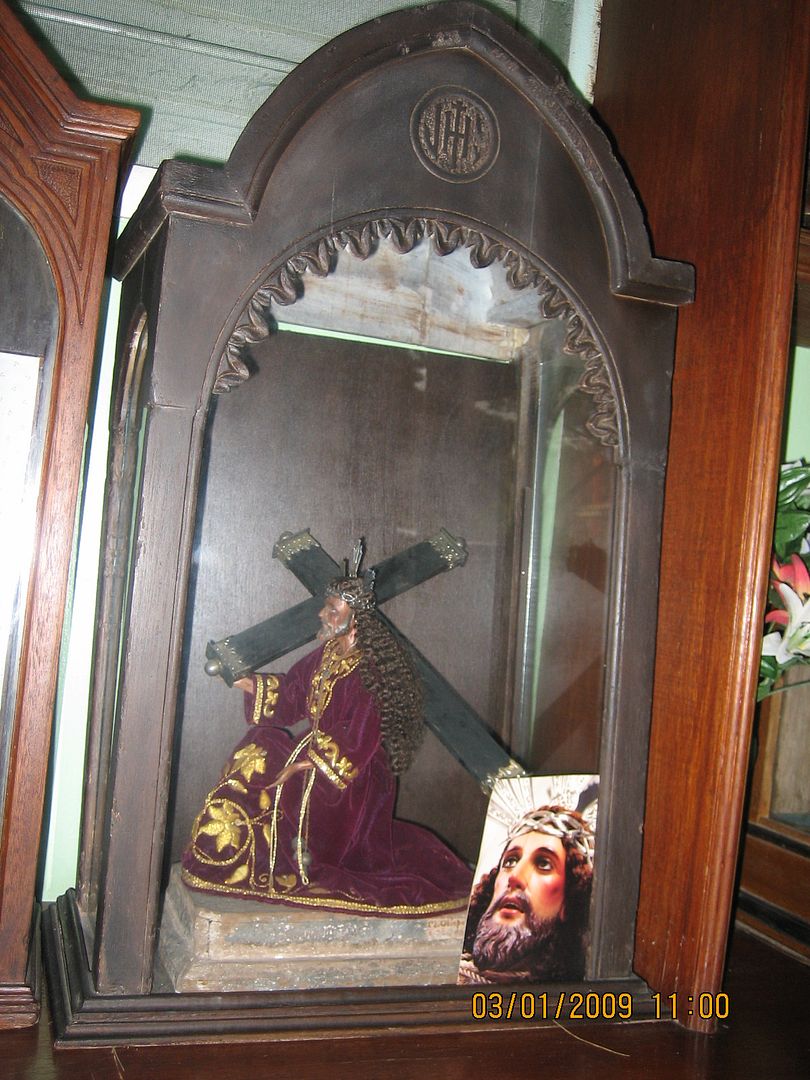
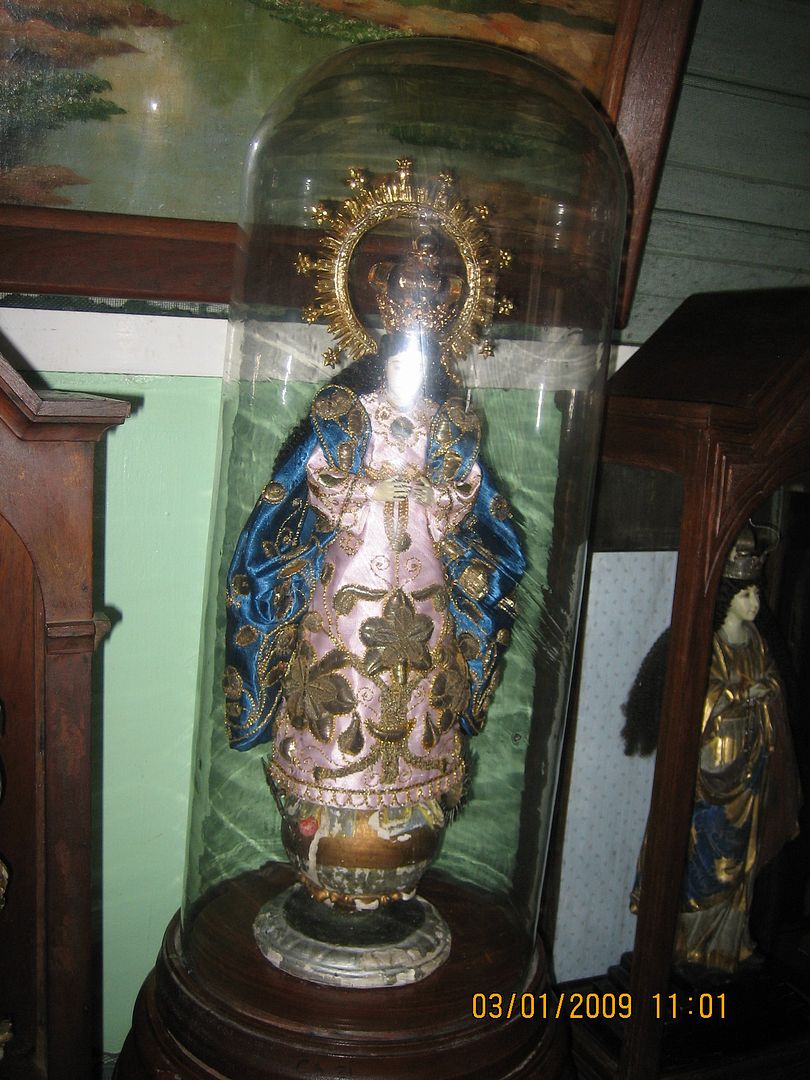



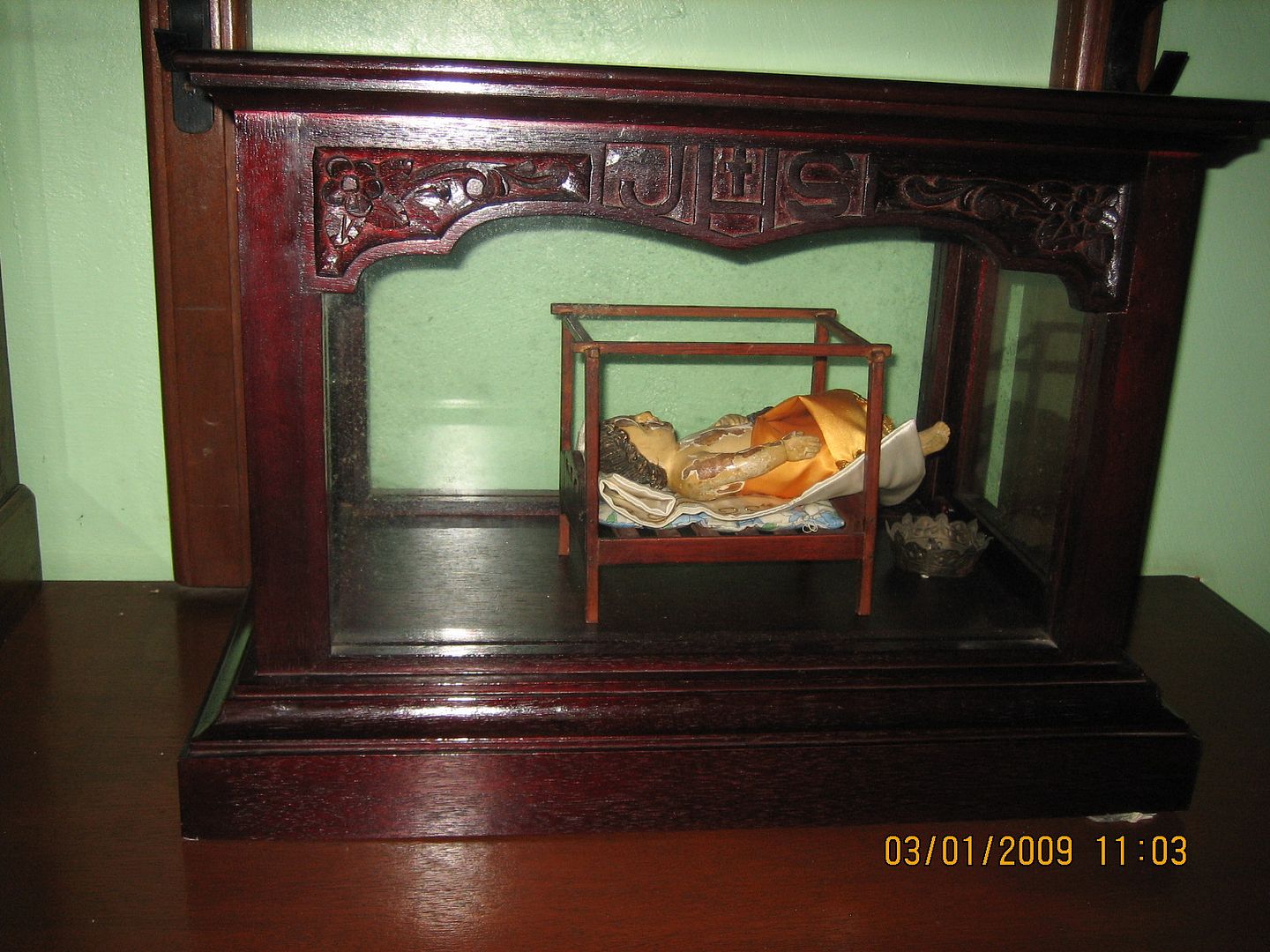

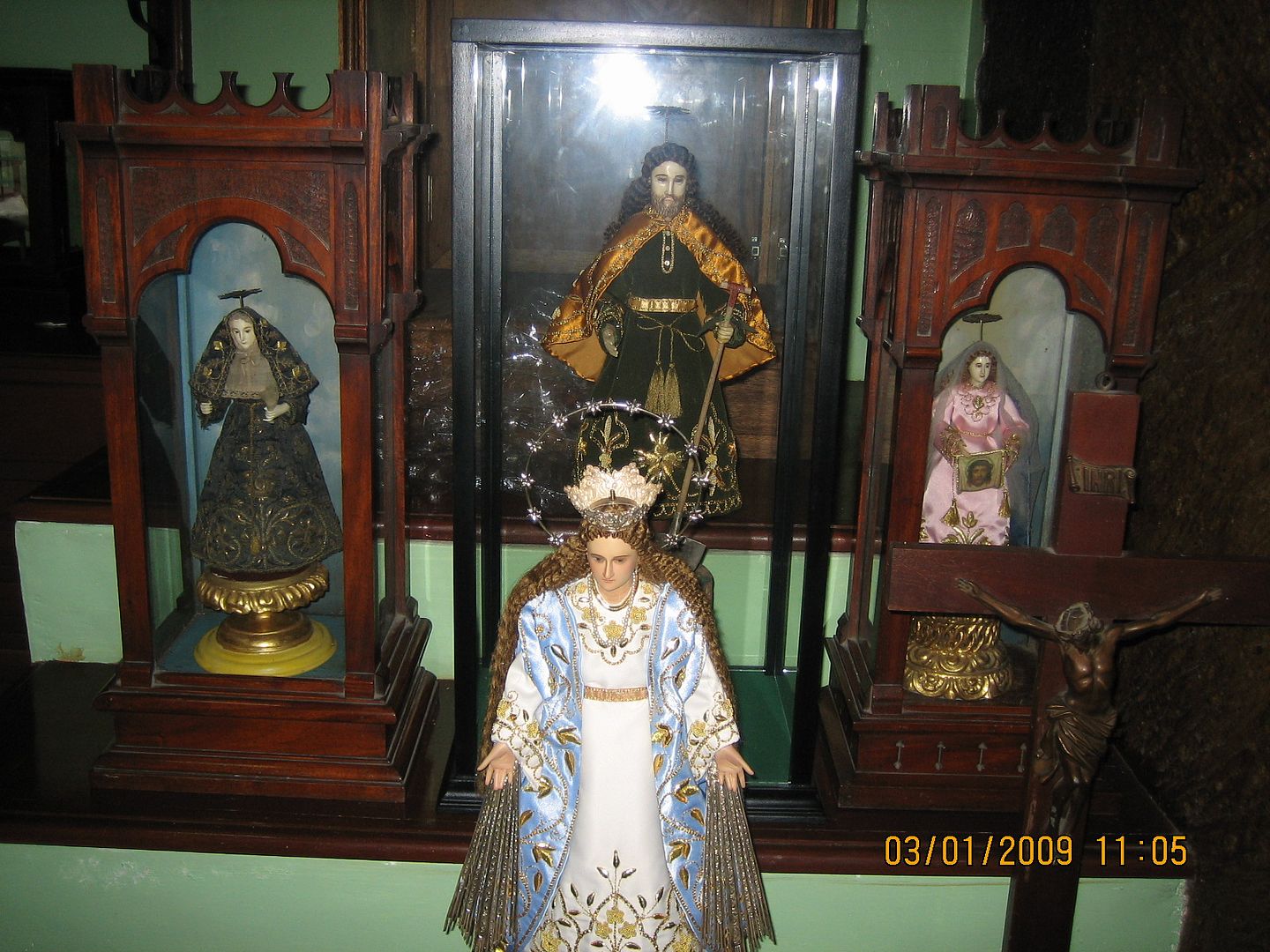



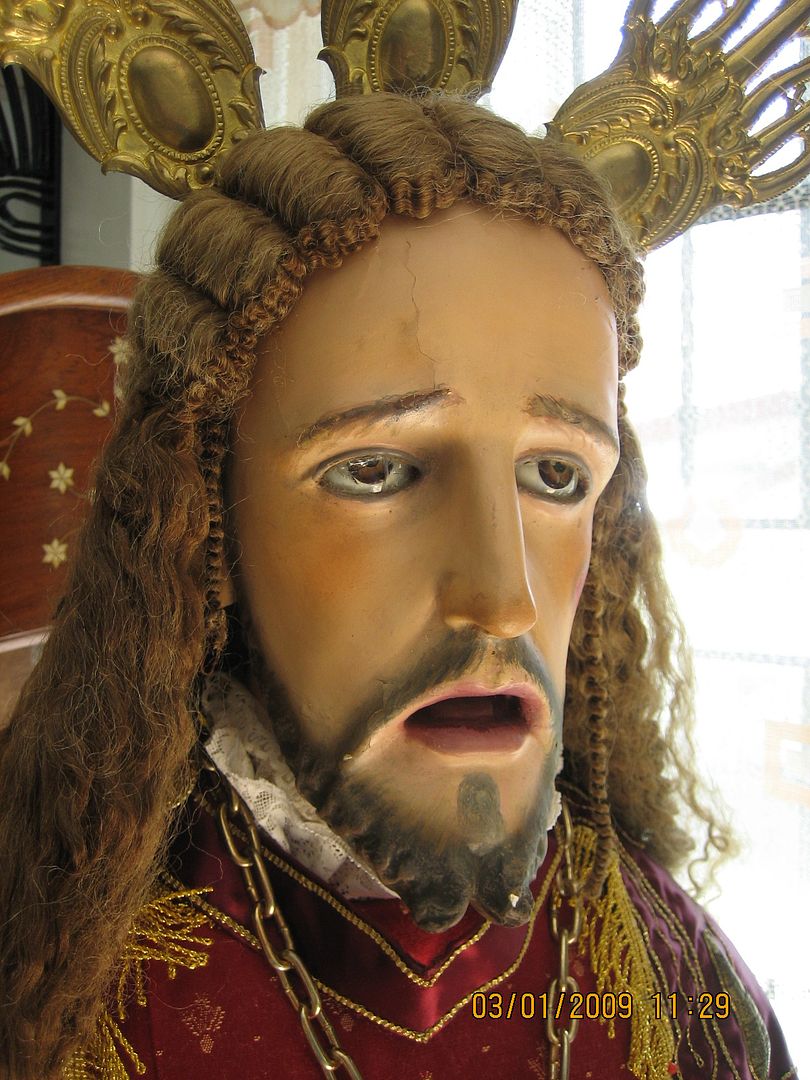
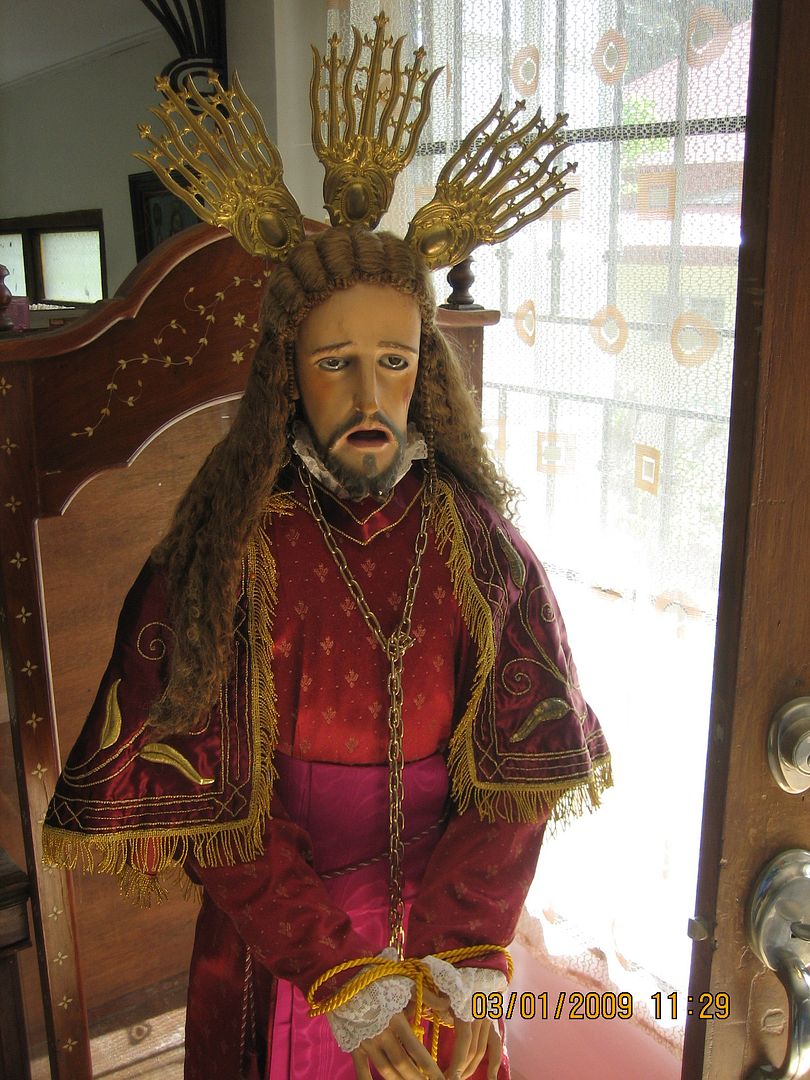
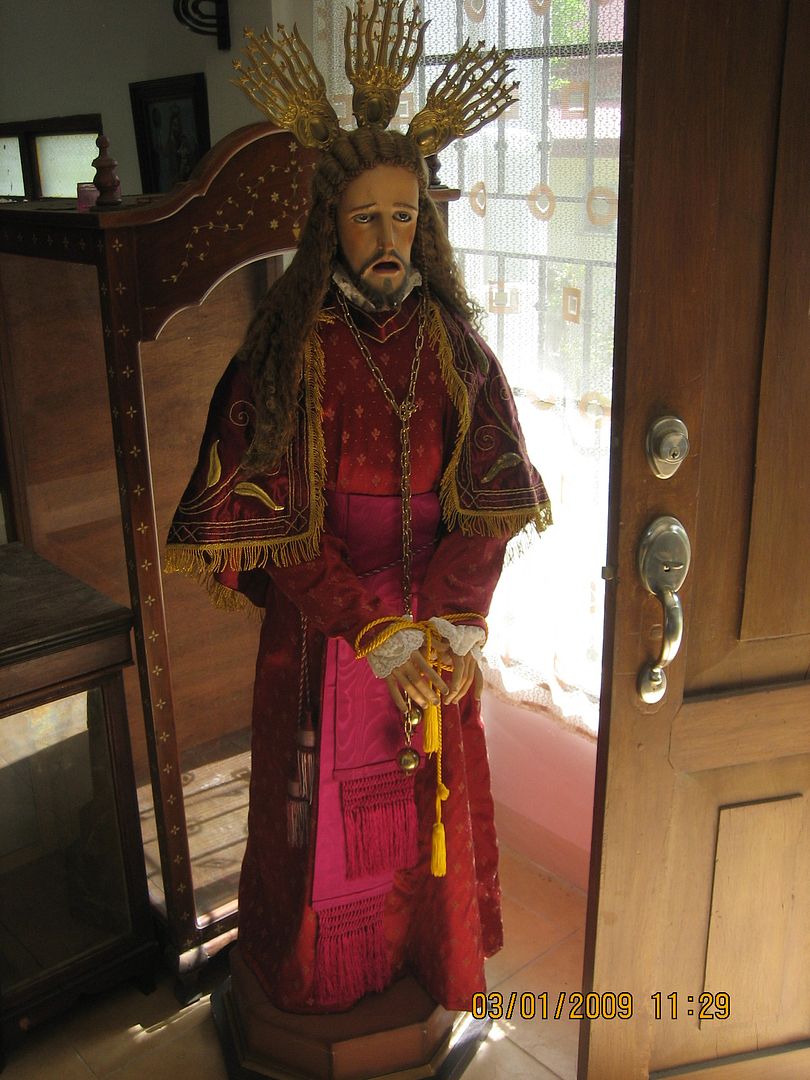
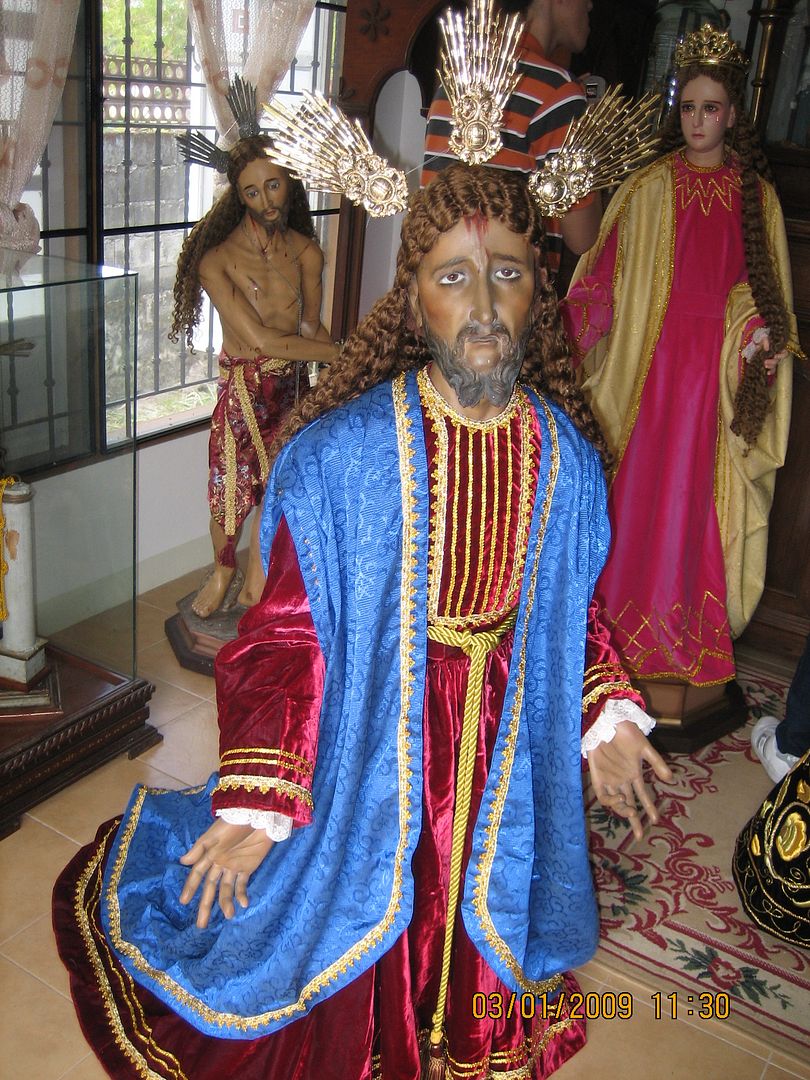
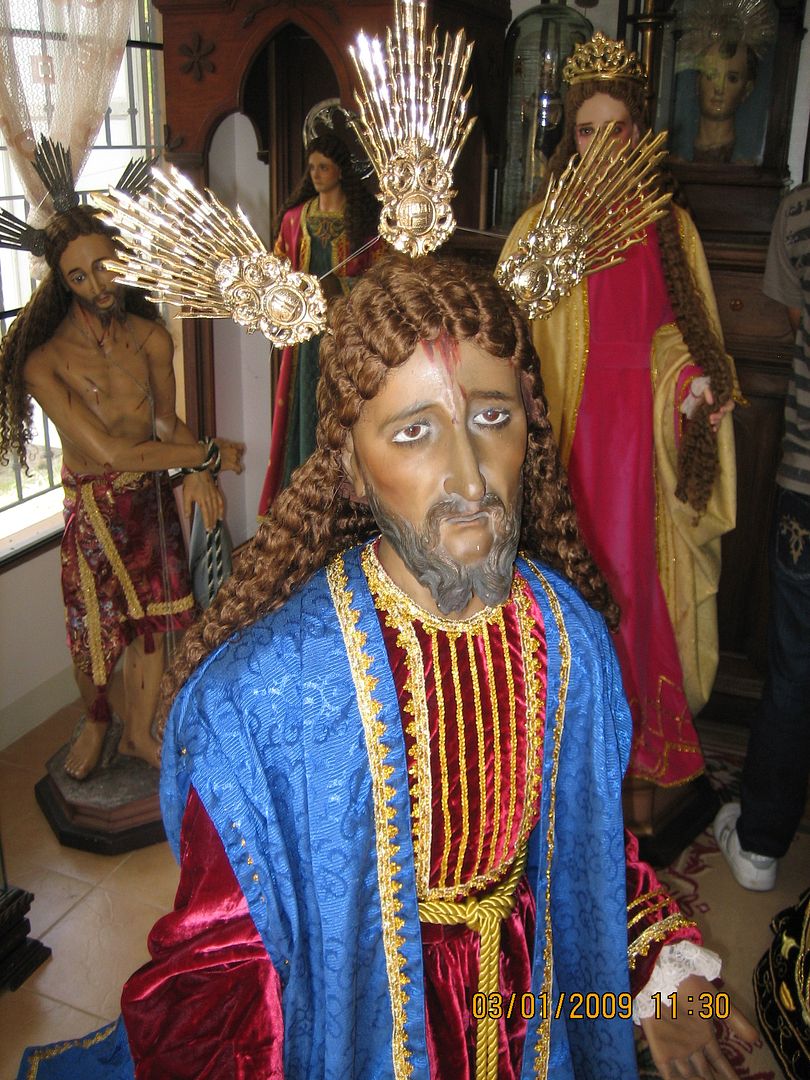
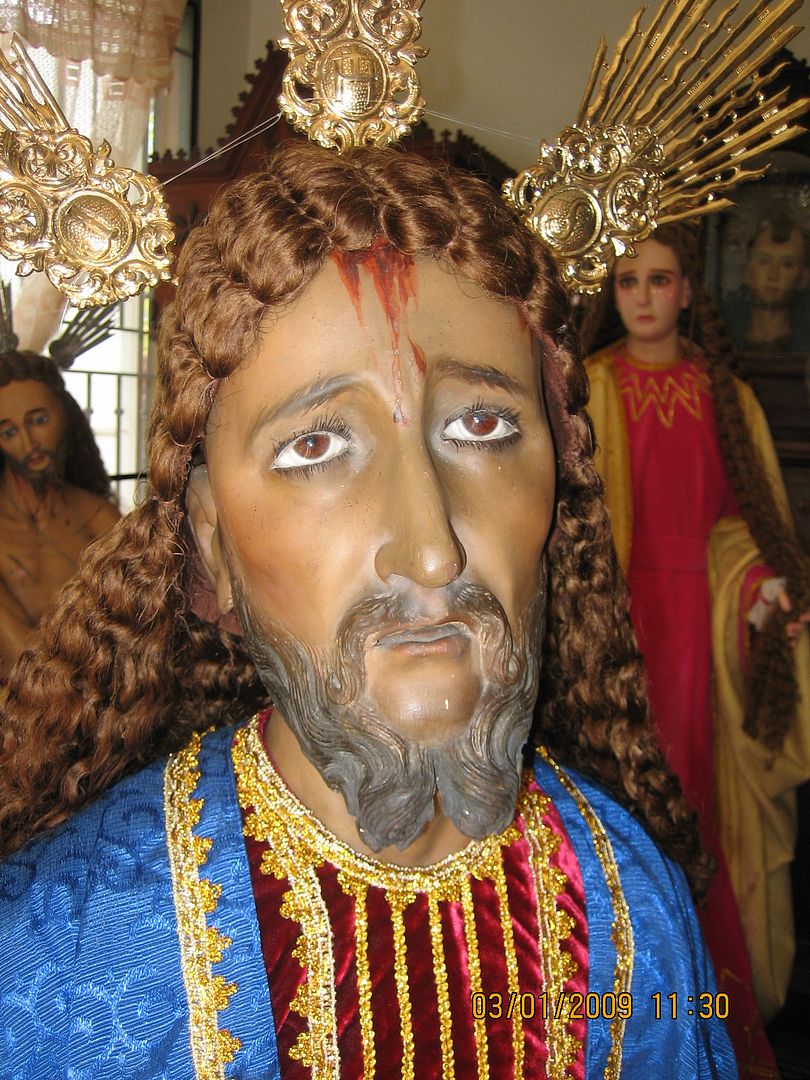
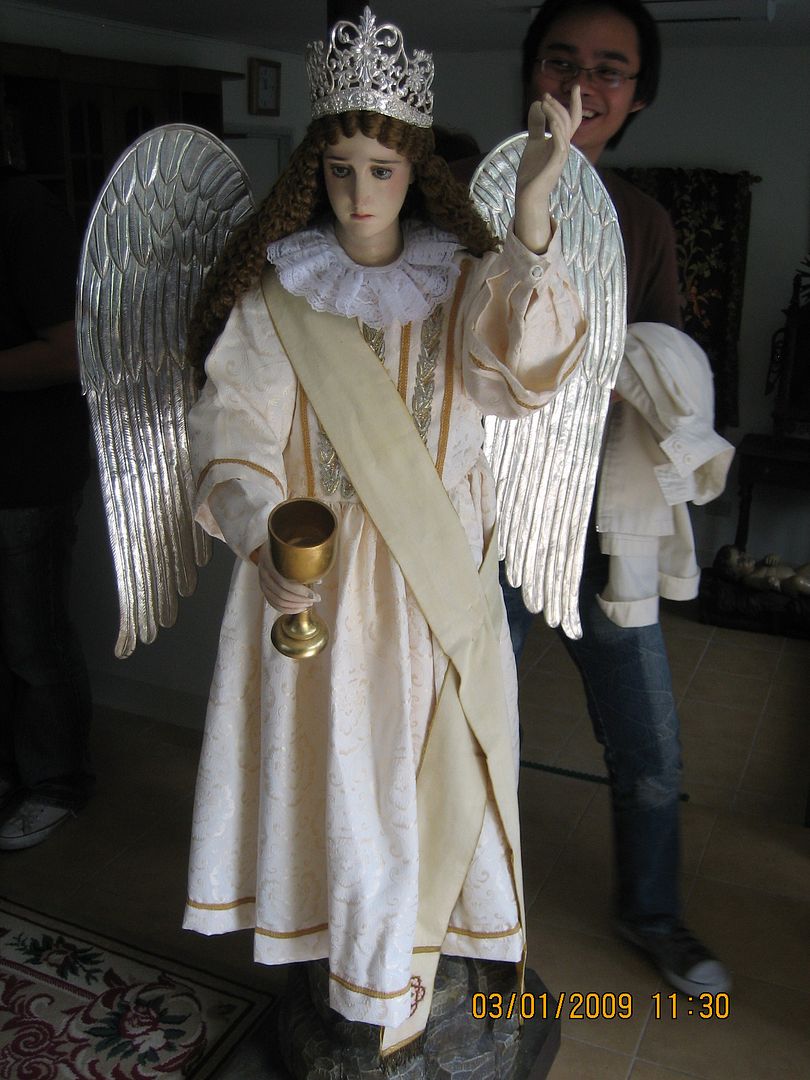





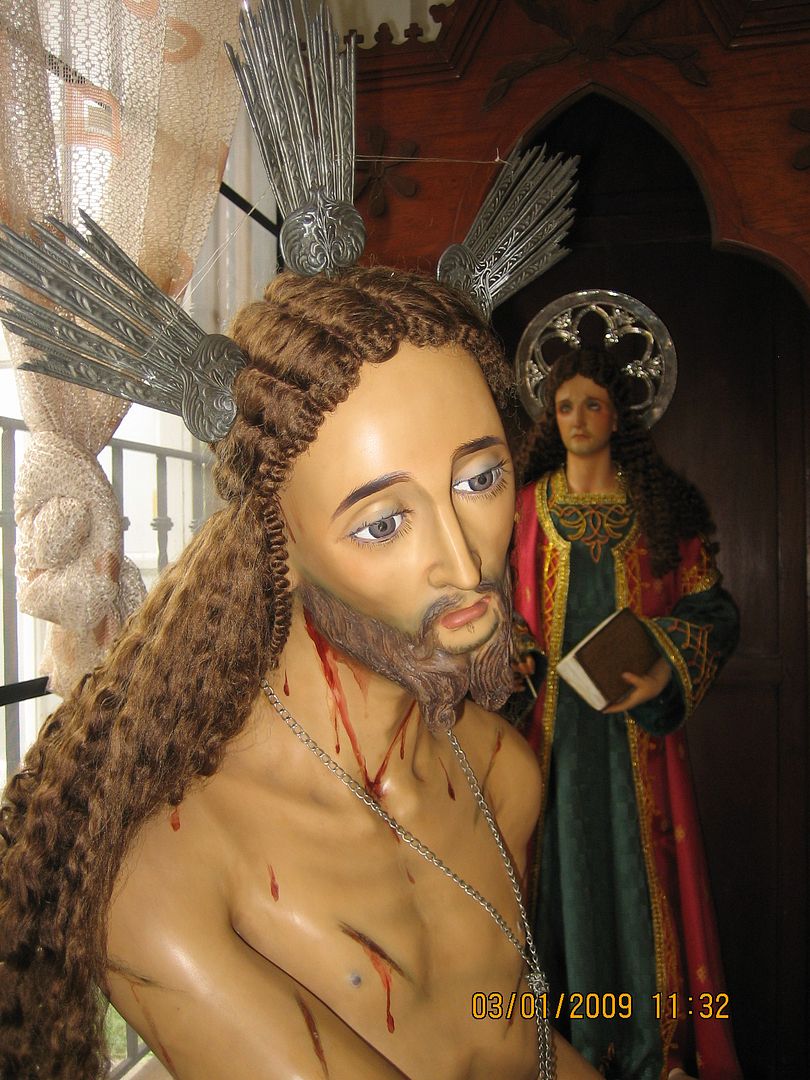
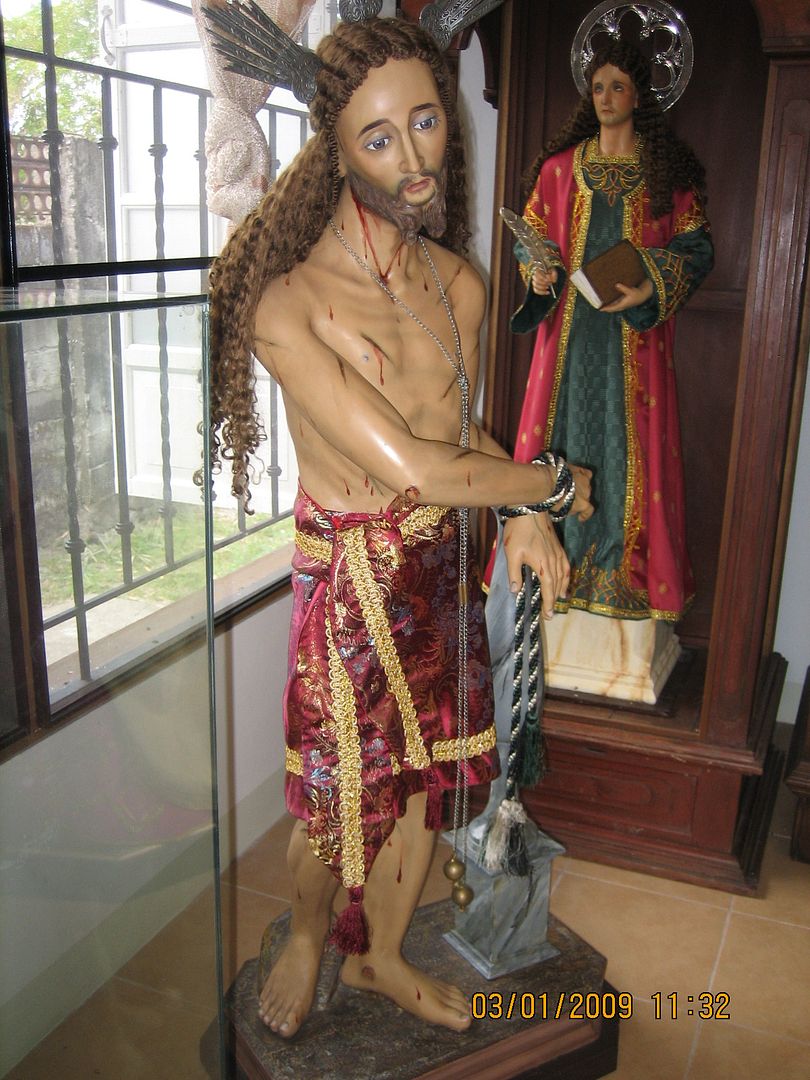
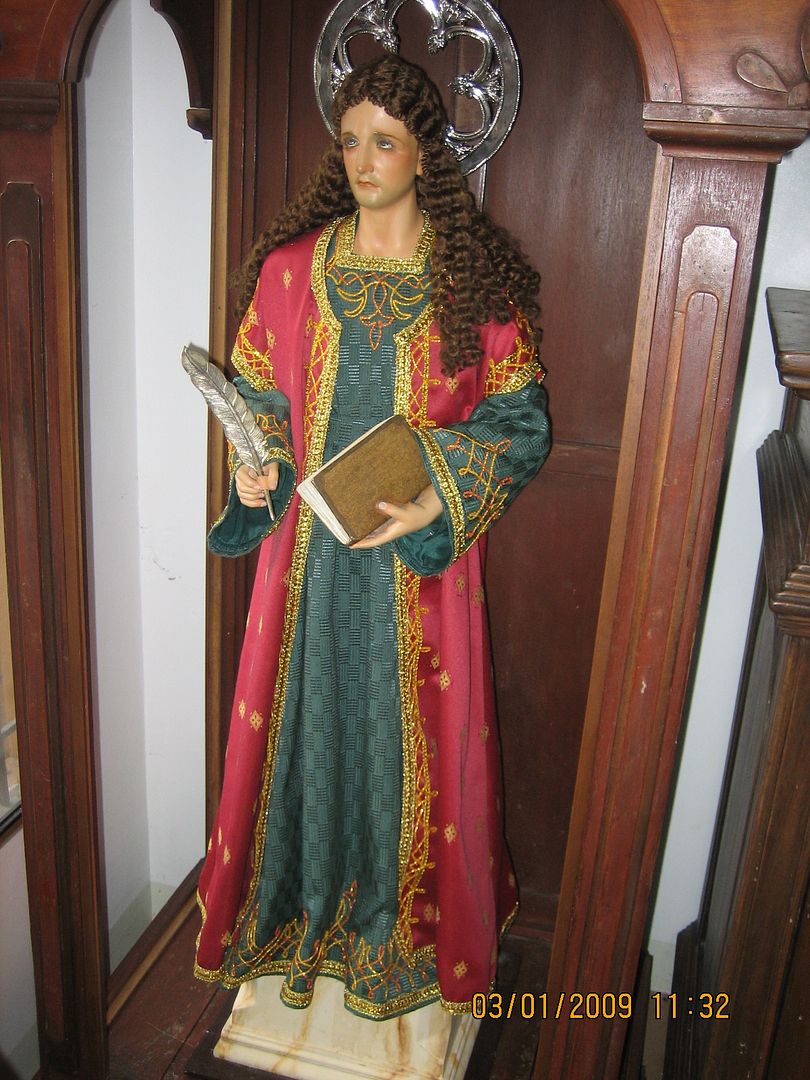





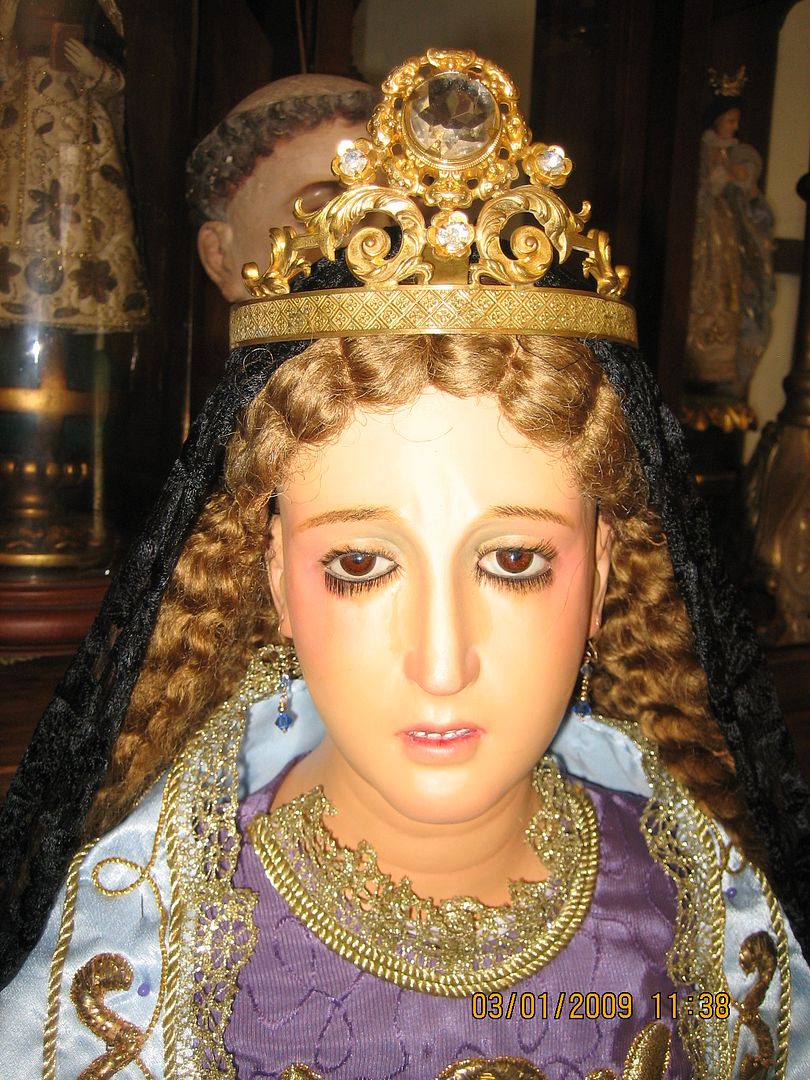


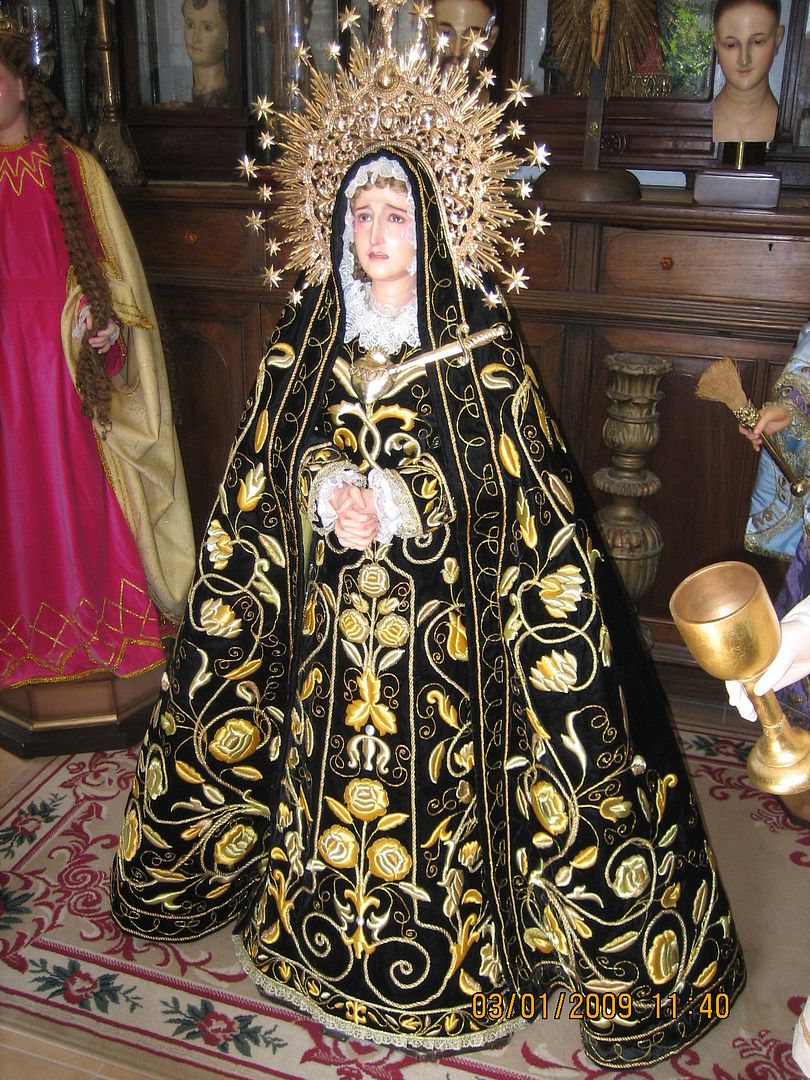
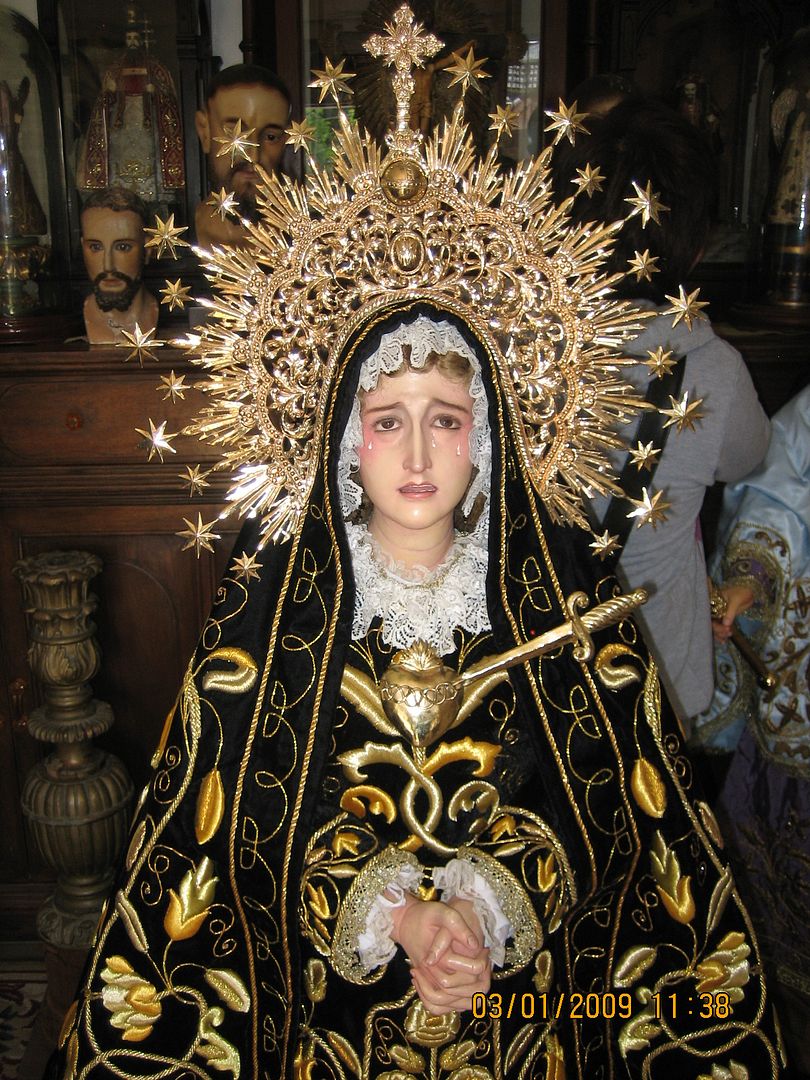

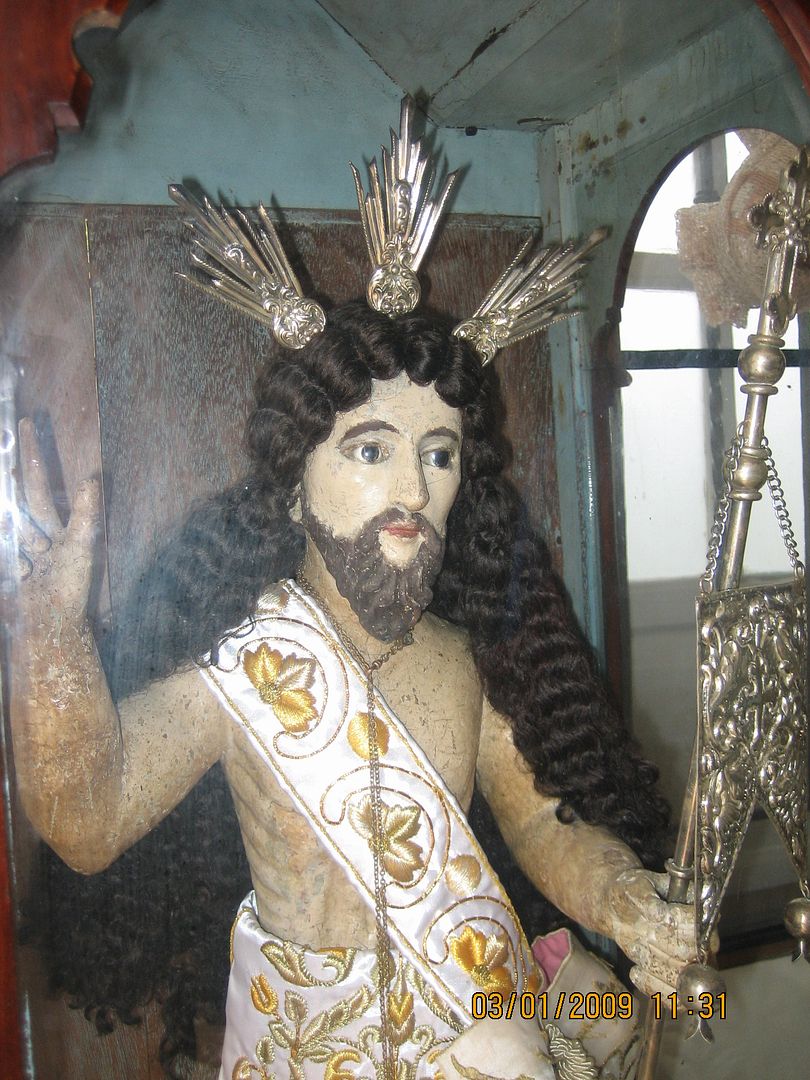


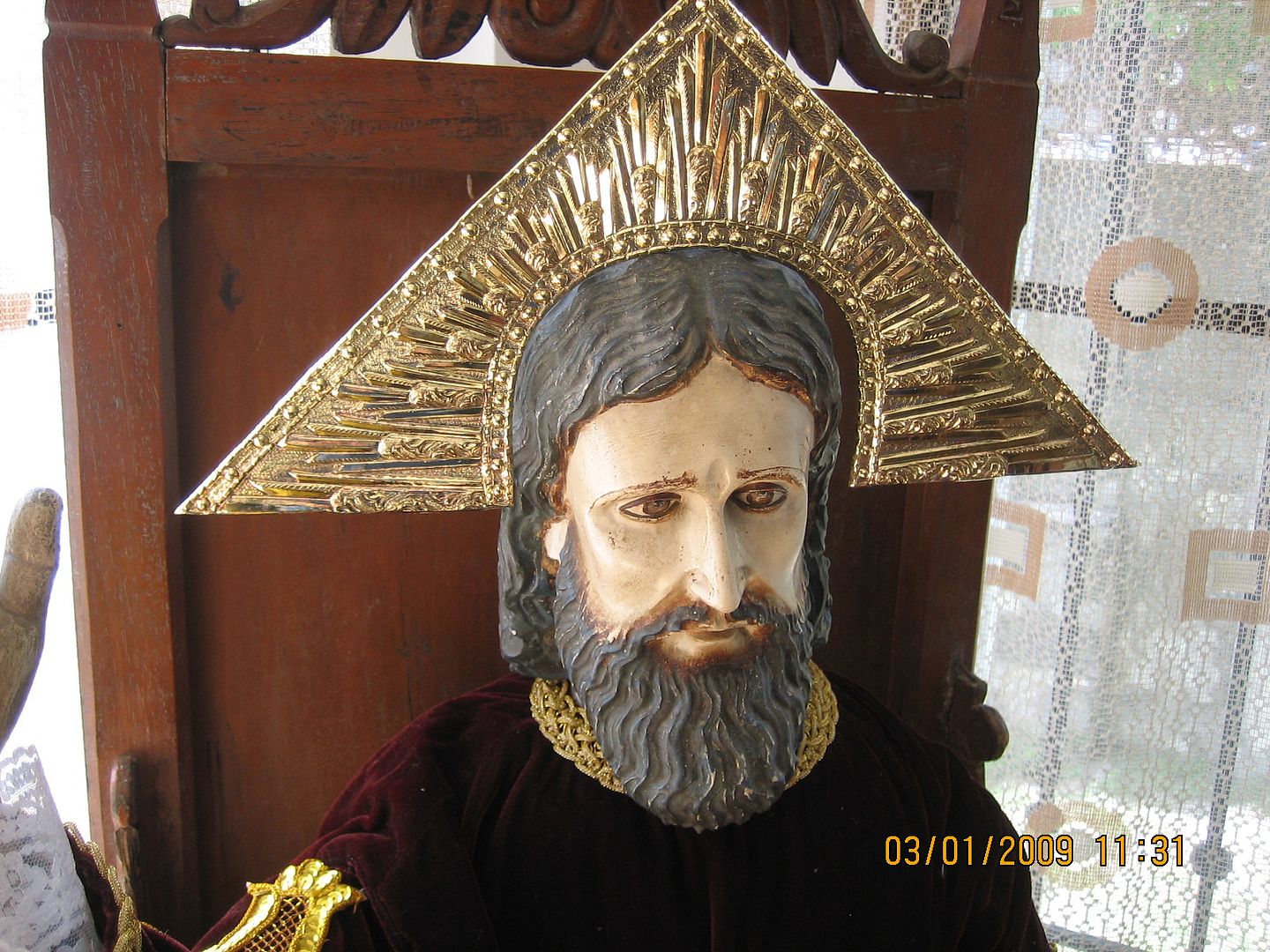
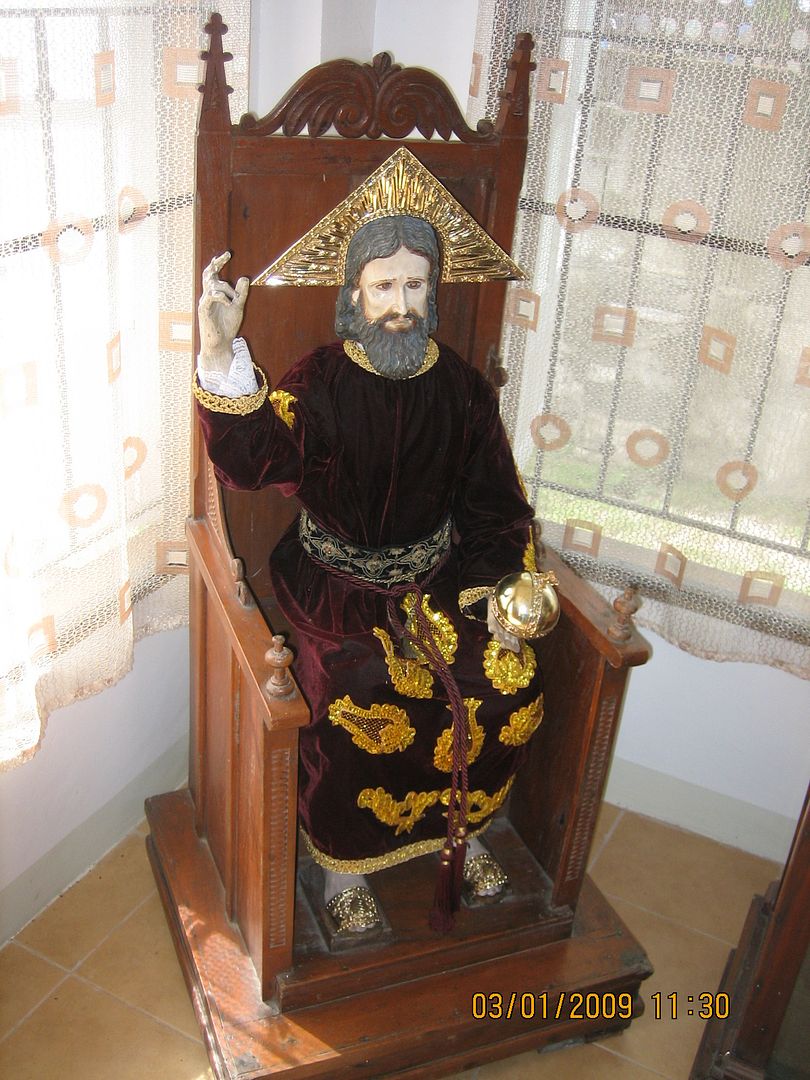
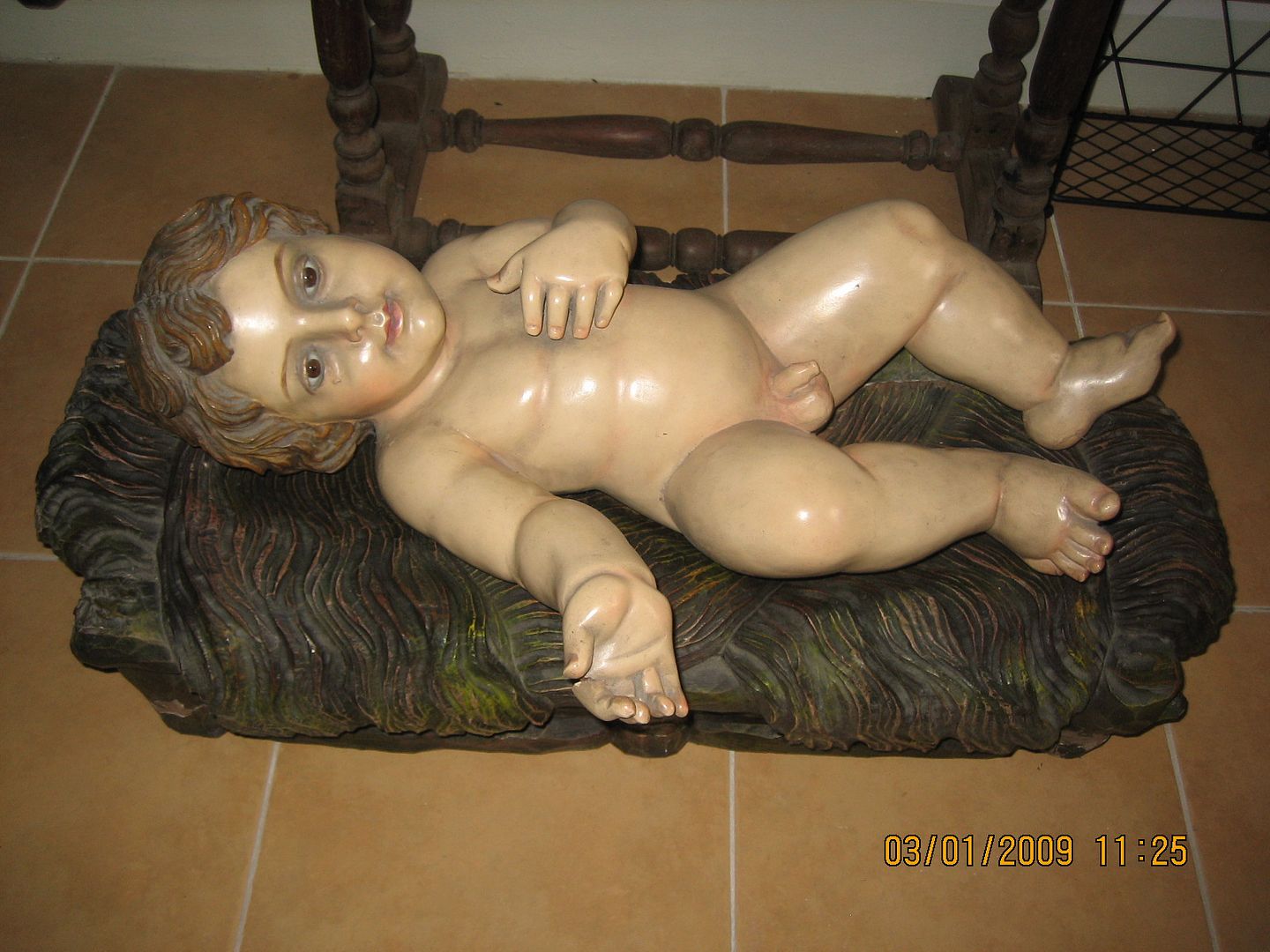
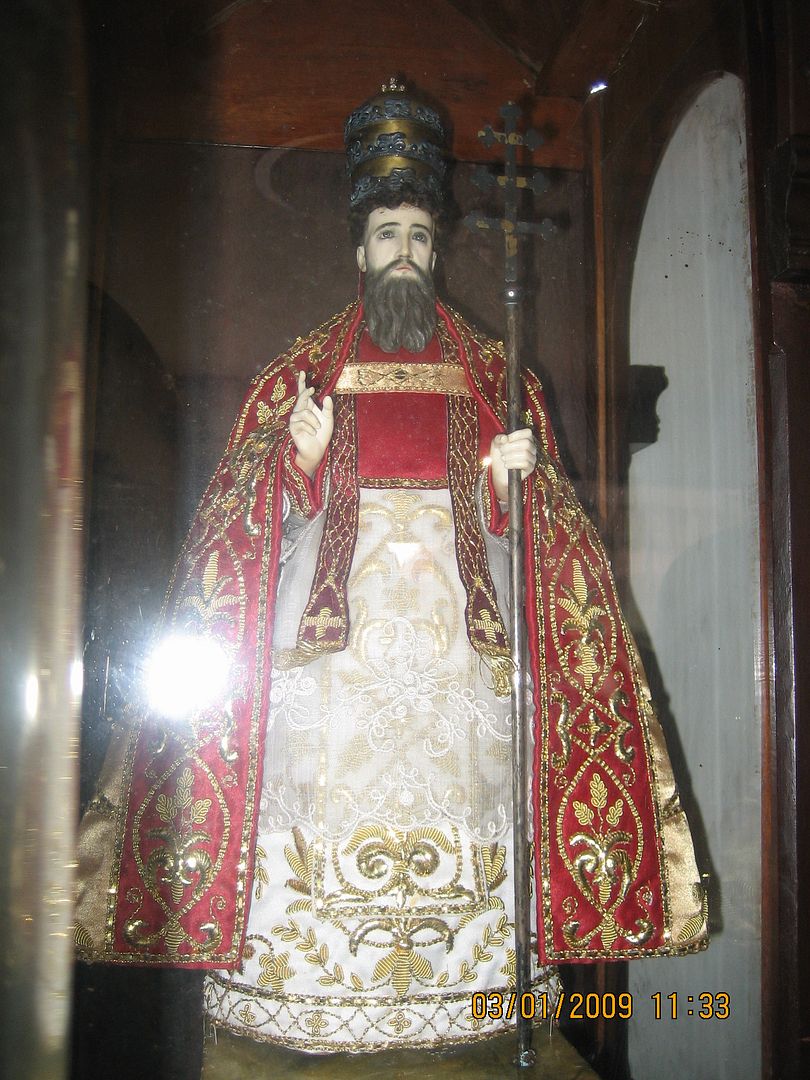





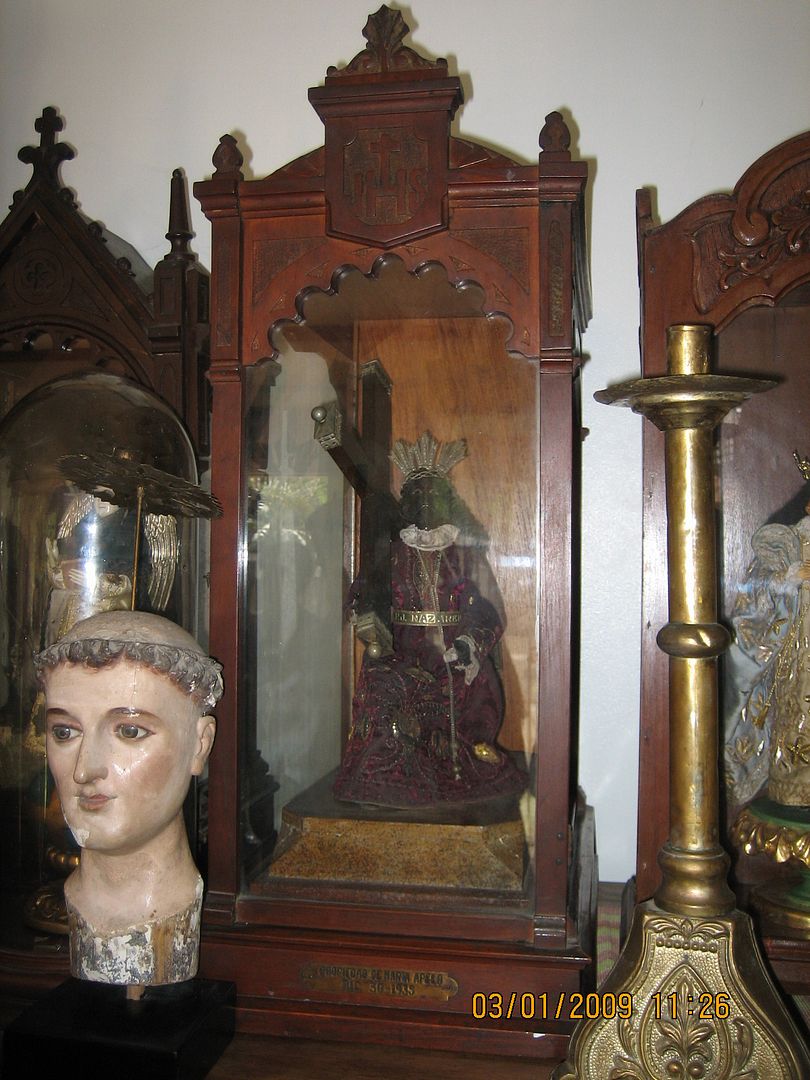
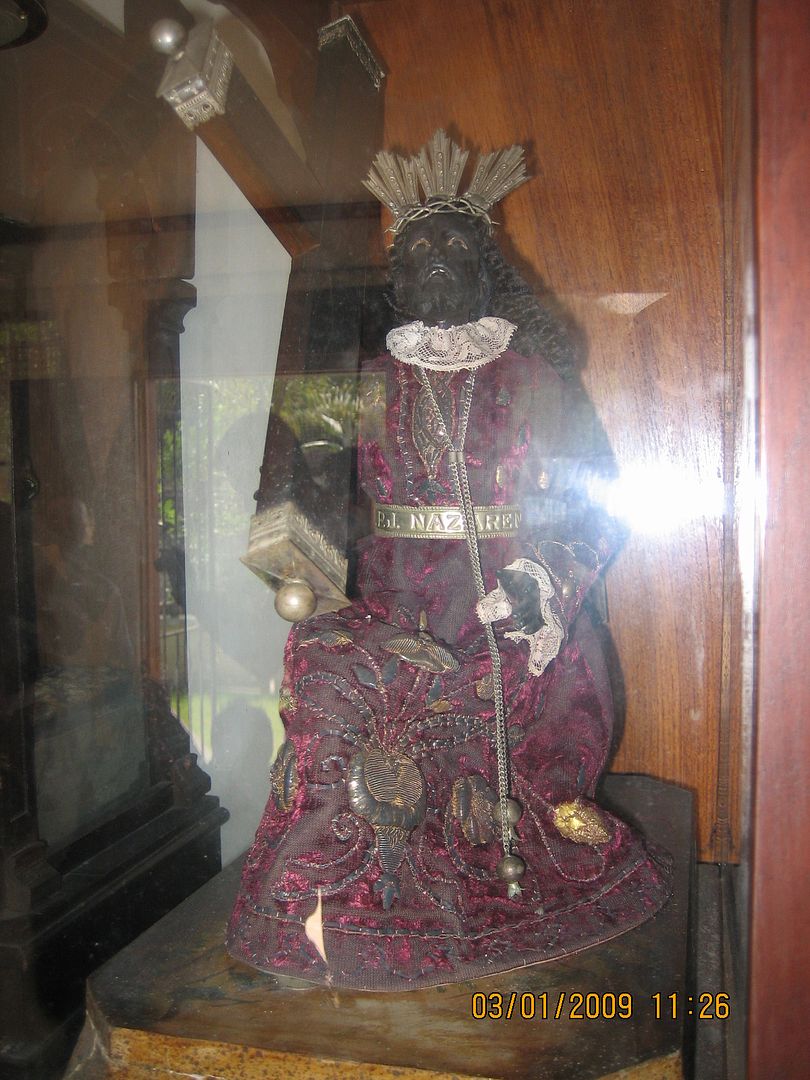
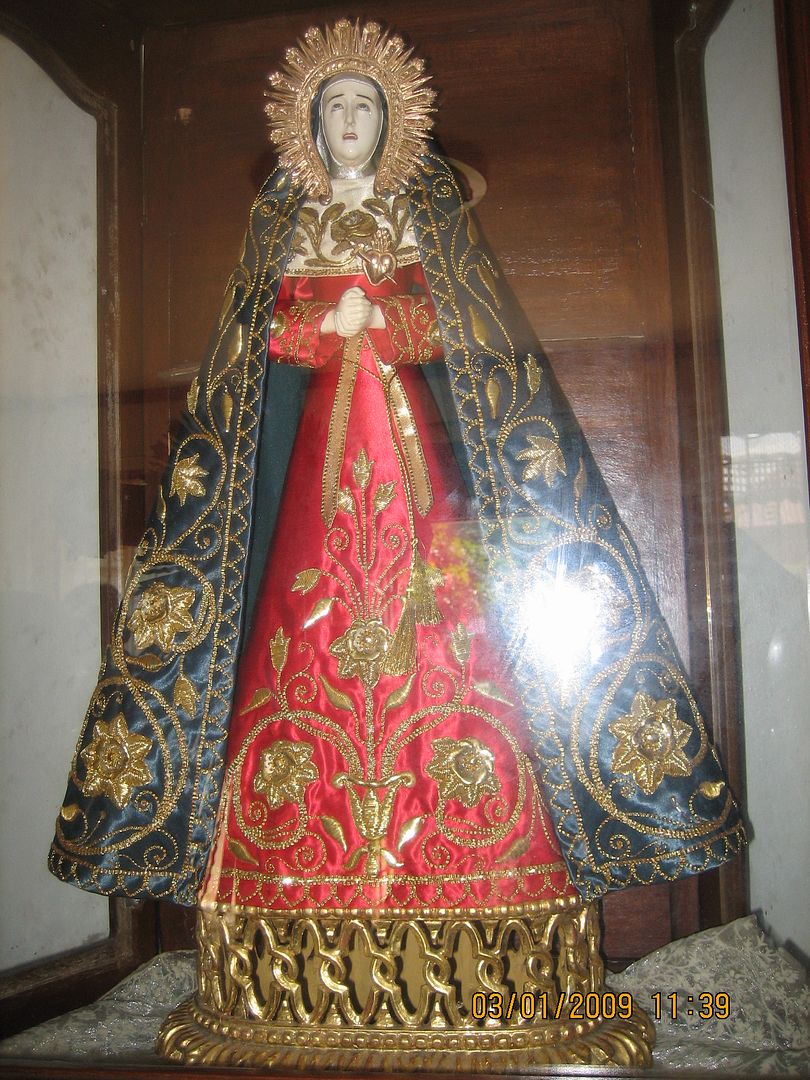
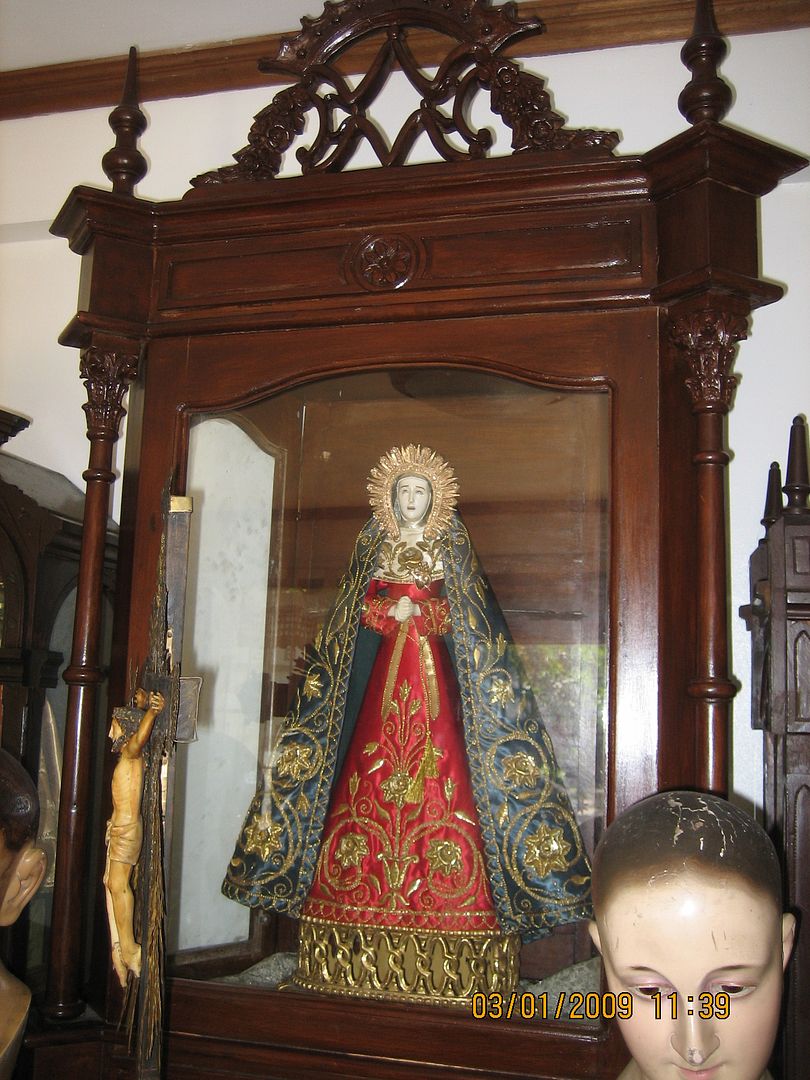

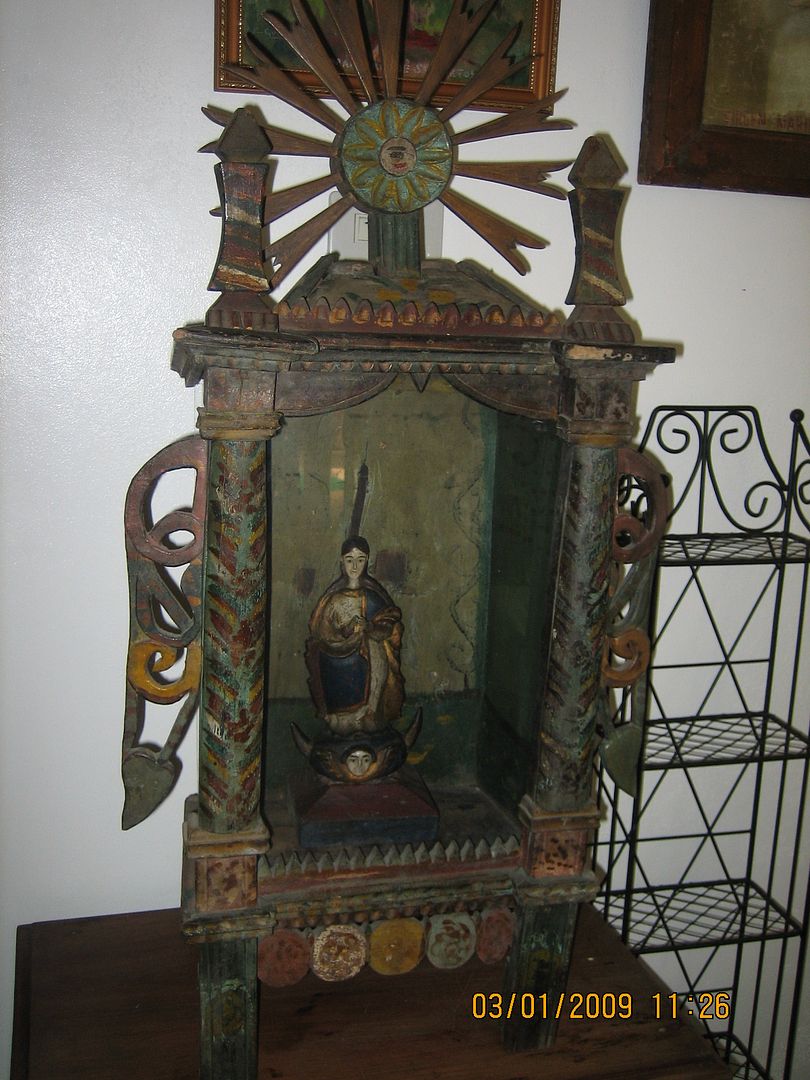

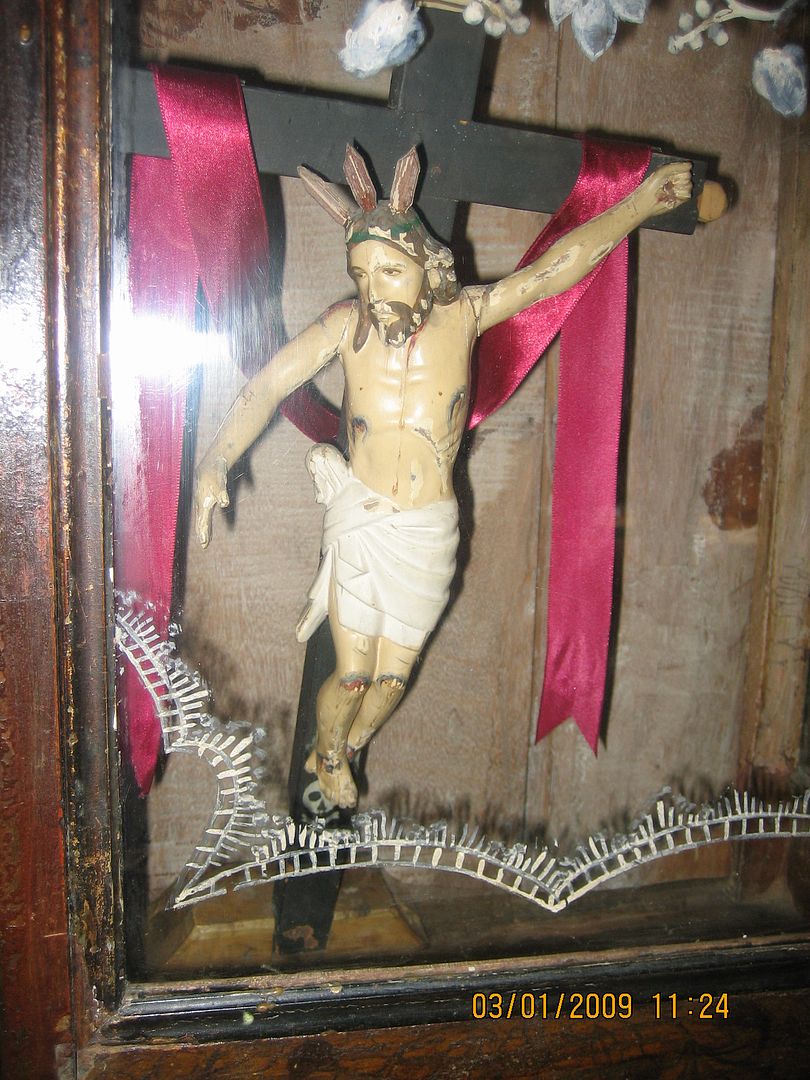
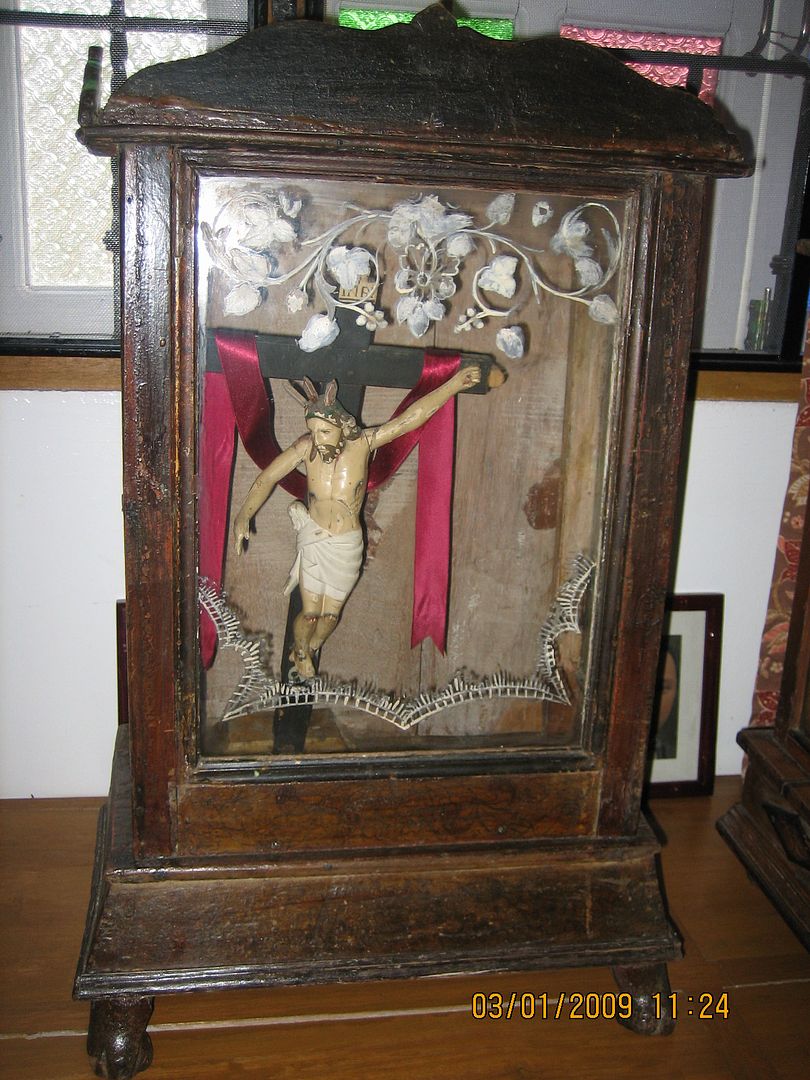
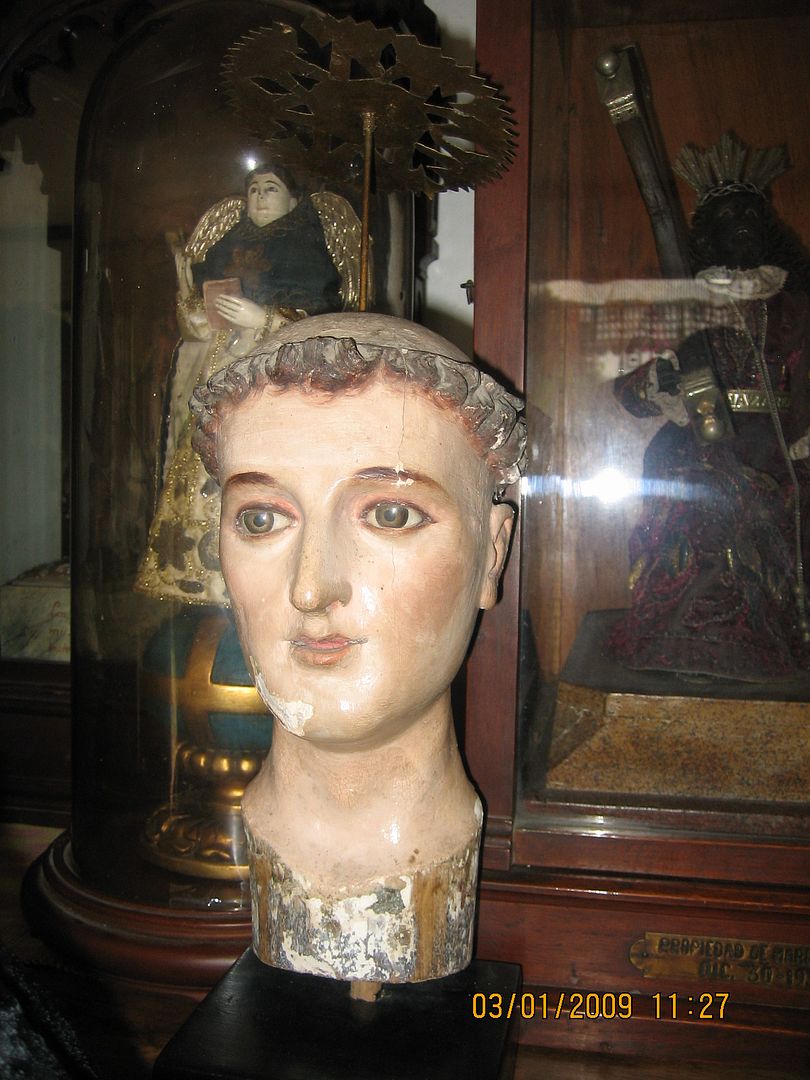

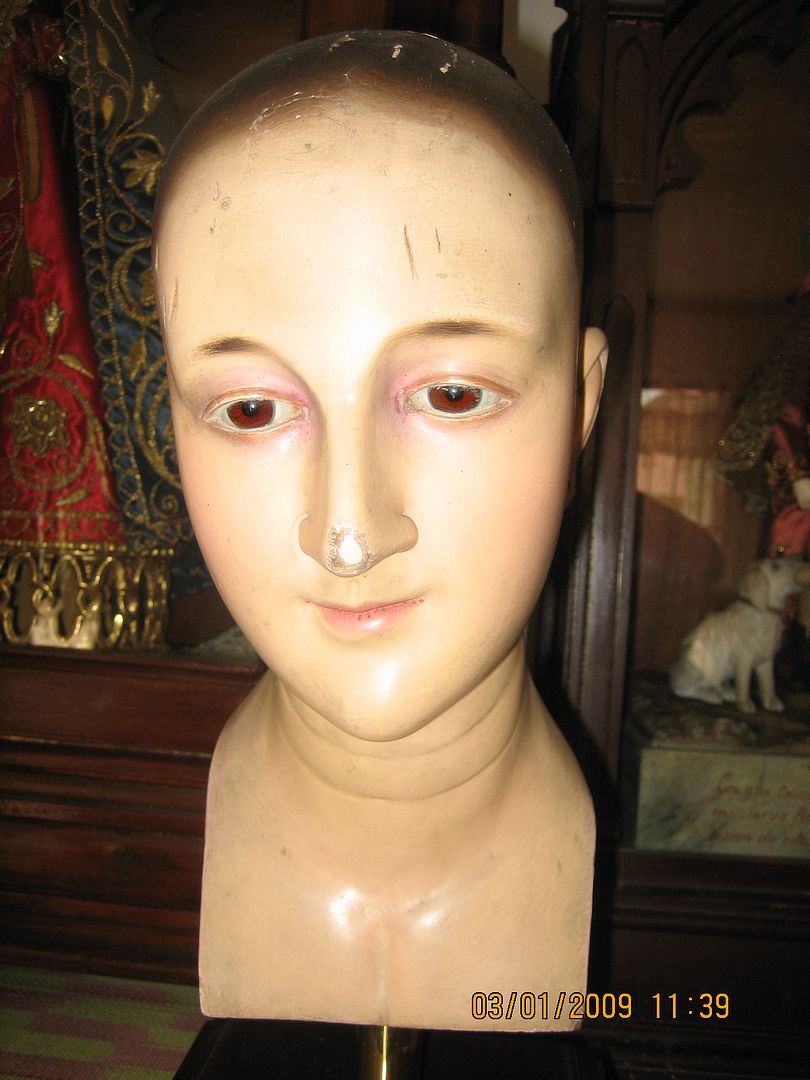
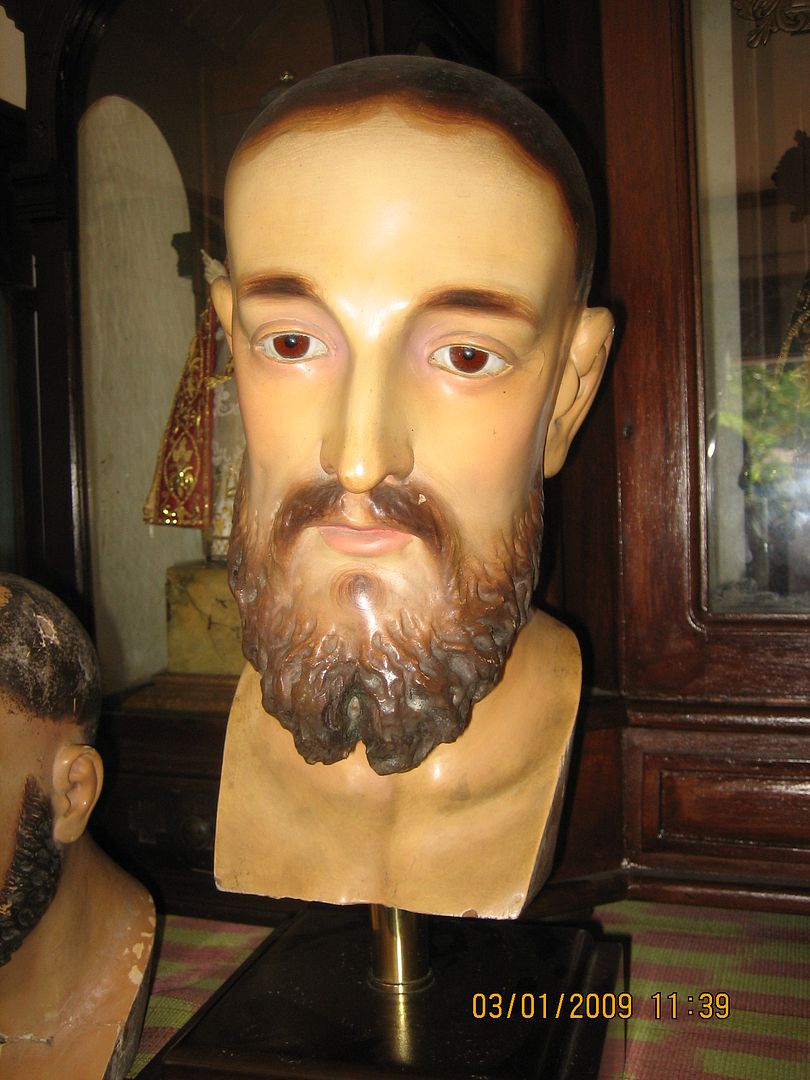
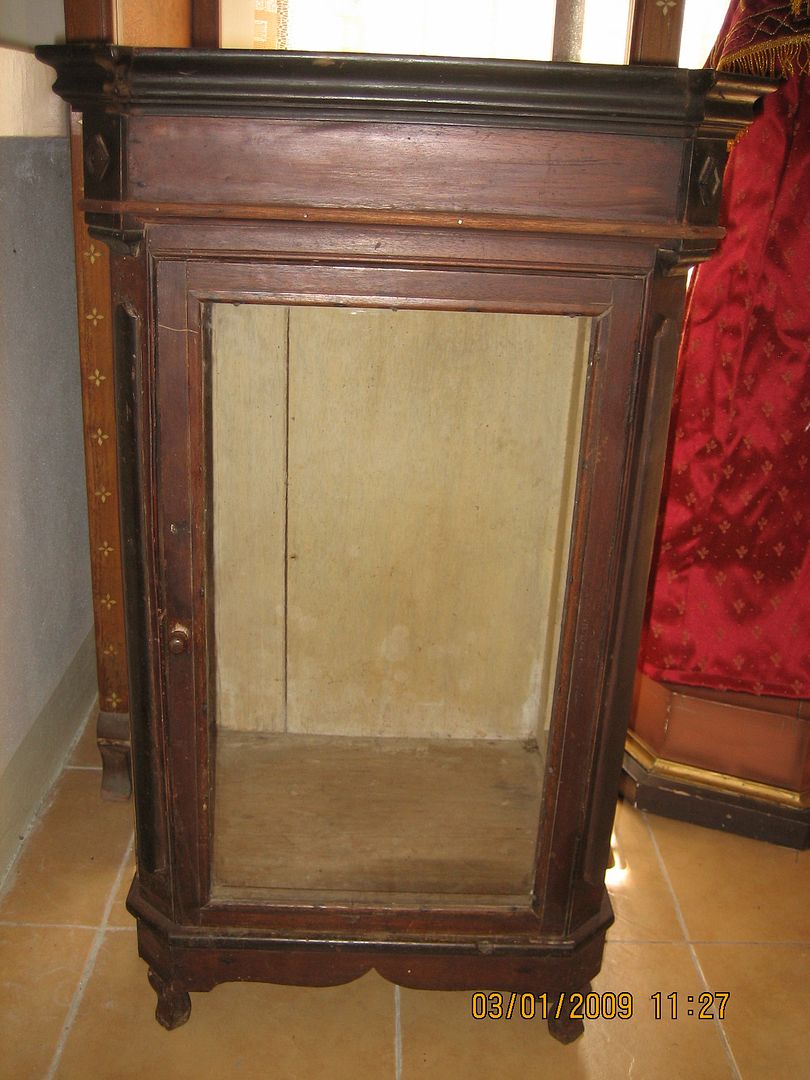


No comments:
Post a Comment